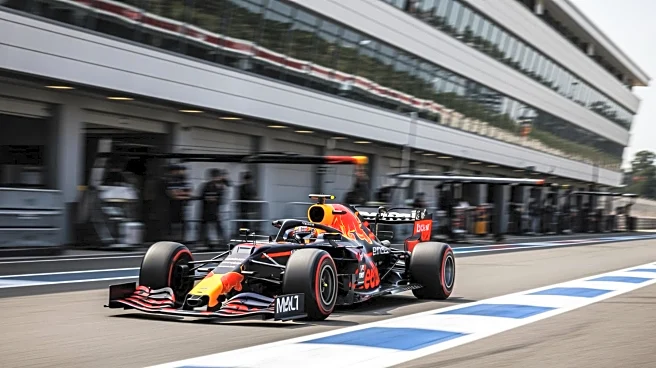What's Happening?
During the Sao Paulo Grand Prix, Max Verstappen briefly led the race despite starting from the pit lane after Red Bull Racing made significant changes to his car. The team installed a new power unit and adjusted
the setup following a poor qualifying session. Verstappen's performance was notable as he climbed through the field, eventually taking the lead on Lap 51. However, strategic decisions, including a pit stop call, impacted his ability to maintain the lead, resulting in a third-place finish.
Why It's Important?
Verstappen's ability to lead the race from a pit lane start demonstrates his exceptional driving skills and the effectiveness of Red Bull's strategic decisions. The team's approach to modifying the car setup highlights the importance of adaptability in Formula 1. This race serves as a case study in the impact of strategic calls on race outcomes, emphasizing the need for teams to balance risk and reward. Verstappen's performance keeps him in the championship race, showcasing the competitive nature of the sport.
What's Next?
As the Formula 1 season progresses, Red Bull Racing will continue to refine their strategies to optimize Verstappen's performance in upcoming races. The team's willingness to take risks and make significant changes to the car setup will be crucial in their pursuit of victories. Verstappen's performance in Sao Paulo sets a precedent for aggressive racing tactics, which may influence future race strategies. The remaining races will test the team's ability to adapt and make strategic decisions under pressure.
Beyond the Headlines
The Sao Paulo Grand Prix highlights the importance of strategic foresight and adaptability in Formula 1. Red Bull Racing's approach to modifying the car setup underscores the team's innovative mindset and commitment to overcoming challenges. This race illustrates the broader competitive landscape of Formula 1, where teams must navigate complex strategic decisions to achieve success. Verstappen's drive serves as a reminder of the sport's inherent unpredictability and the need for teams to remain agile in their decision-making processes.











